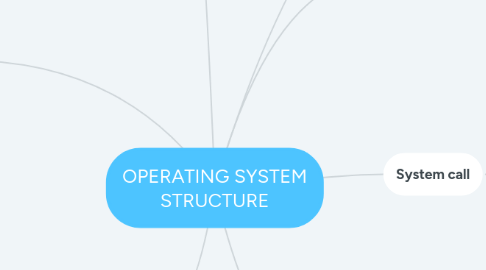
1. Layered Approach
1.1. In layered approach, the operating system is divided into a number of layers (levels), each built on top of lower layers. The bottom layer (layer 0), is the hardware; the highest (layer N) is the user interface
1.2. With modularity, layers are selected such that each uses functions (operations) and services of only lower-level layers.
1.3. Advantage o Simplicity of construction and debugging
1.4. Disadvantages o The careful definition and interaction of the layers o Less efficient
2. Microkernel
2.1. Small operating system core Contains only essential core operating systems functions Many services traditionally included in the operating system are now external subsystems o Device drivers o File systems o Virtual memory manager o Windowing system o Security services
2.1.1. Benefit Of Microkernel Extensibility o Allows the addition of new services Flexibility o New features added o Existing features can be subtracted Reliability o Modular design o Small microkernel can be rigorously tested Portability o Changes needed to port the system to a new processor is changed in the microkernel - not in the other services
3. Operating System Design
3.1. Design and Implementation of OS not “solvable”, but some approaches have proven successful
3.2. Start by defining goals and specifications
3.3. The design of the system will be affected by the choice of hardware and the type of system: batch, time shared, single user, multiuser, distributed, real time or general purpose
4. Operating system service
4.1. User interface
4.2. Program execution
4.3. I/O operation
4.4. File system manipulation
4.5. Communication
4.6. Error detection
5. System call
5.1. System calls provide the interface between a running program and the operating system
5.1.1. Process control
5.1.2. File management
5.1.3. Device management
5.1.4. Information maintenance
5.1.5. Communications
5.1.6. Protection
6. Additional operating system
6.1. Additional functions exist not for helping the user, but rather for ensuring efficient system operations.
6.1.1. Resource allocation – allocating resources to multiple users or multiple jobs running at the same time
6.1.2. Accounting – keep track of and record which users use how much and what kinds of computer resources for account billing or for accumulating usage statistics.
